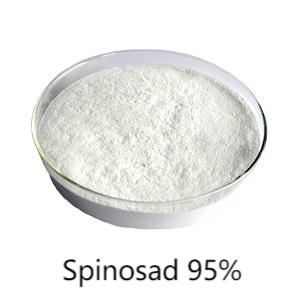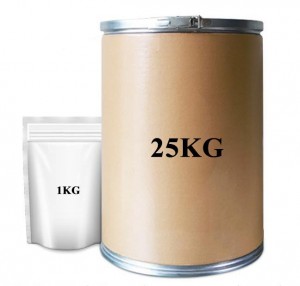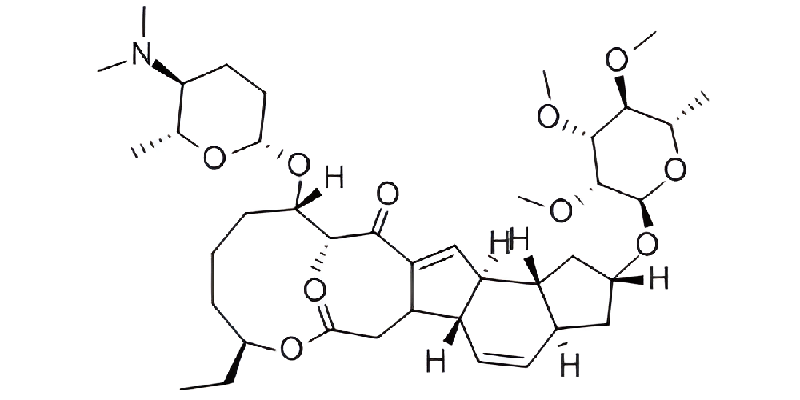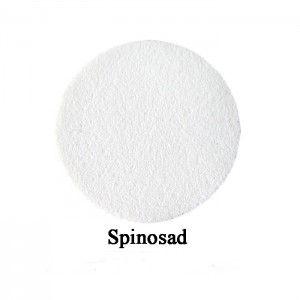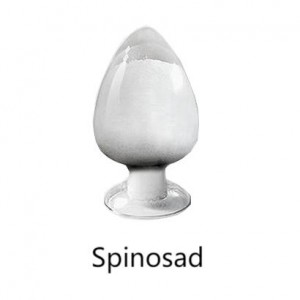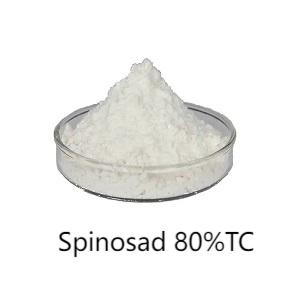Top Quality Spinosad CAS 131929-60-7 with Fast Delivery
Product Description
Spinosad is a low toxicity, high efficiency, broad-spectrum Fungicide. And it has been used around the world for the control of a variety of insect pests, including Lepidoptera, Diptera,Thysanoptera, Coleoptera, Orthoptera and Hymenoptera, and many others. Spinosad is also considered as a natural product, so it is approved for use in organic agriculture by numerous nations.
Using Methods
1. For vegetable pest control of diamondback moth, use 2.5% suspending agent 1000-1500 times of solution to evenly spray in the peak stage of young larvae, or use 2.5% suspending agent 33-50ml to 20-50kg of water spray every 667m2.
2. To control beet armyworm, water spray with 2.5% suspension agent 50-100ml every 667 square meters at the early larval stage, and the best effect is in the evening.
3. To prevent and control thrips, every 667 square meters, use 2.5% suspending agent 33-50ml to spray water, or use 2.5% suspending agent 1000-1500 times of liquid to evenly spray, focusing on young tissues such as flowers, young fruits, tips and shoots.
Attentions
1. May be toxic to fish or other aquatic organisms, and pollution of water sources and ponds should be avoided.
2. Store the medication in a cool and dry place.
3. The time between the last application and harvest is 7 days. Avoid encountering rainfall within 24 hours after spraying.
4. Pay attention to personal safety protection. If it splashes into the eyes, immediately rinse with plenty of water. If in contact with skin or clothing, wash with plenty of water or soapy water. If taken by mistake, do not induce vomiting on your own, do not feed anything or induce vomiting to patients who are not awake or have spasms. The patient should be immediately sent to the hospital for treatment.
Action mechanism
The mechanism of action of polycidin is very novel and unique, which is different from the general macrolides, and its unique chemical structure determines its unique insecticidal mechanism. Polycidin has rapid contact and ingestion toxicity to insects. It has the unique toxic symptoms of nerve agents. Its mechanism of action is to stimulate the nervous system of insects, increase its spontaneous activity, and lead to non-functional muscle contraction, failure, accompanied by shaking and paralysis. It was shown that nicotinic acetylcholine receptor (nChR) was continuously activated to induce prolonged acetylcholine (Ach) release. Polycidin also acts on γ-aminobutyric acid (GAGB) receptors, altering the function of GABA gated chlorine channels and further enhancing its insecticidal activity.
Degradation pathway
The residue of pesticides in the environment refers to the “maximum load” of pesticides that the environment may contain, that is, in a certain region and a certain period, both to ensure the biological quality and yield of agricultural products and not to break the environmental quality. “Maximum load” is also a threshold value to measure the environmental safety of pesticides, and it is also a variable that gradually decreases with the change of time and environmental conditions. As long as it does not exceed this threshold, the environmental safety factor of pesticides is qualified. Polycidin rapidly degrades in the environment through a variety of combination pathways, mainly photodegradation and microbial degradation, and finally decomposes into natural components such as carbon, hydrogen, oxygen, and nitrogen, thus causing no pollution to the environment. The photodegradation half-life of polycidin in soil was 9~10 days, that of leaf surface was 1.6~16 days, and that of water was less than 1 day. Of course, the half-life is related to the intensity of light, in the absence of light, the half-life of multicidin by aerobic soil metabolism is 9 to 17 days. In addition, the soil mass transfer coefficient of polycidin is medium K (5~323), its solubility in water is very low and can be rapidly degraded, so the leaching performance of polycidin is very low, so it can only be used rationally, and it is also safe for underground water sources.




